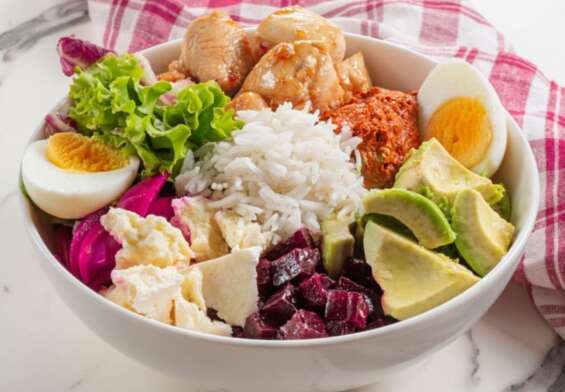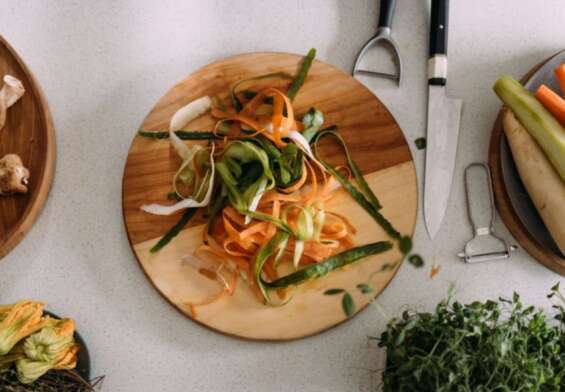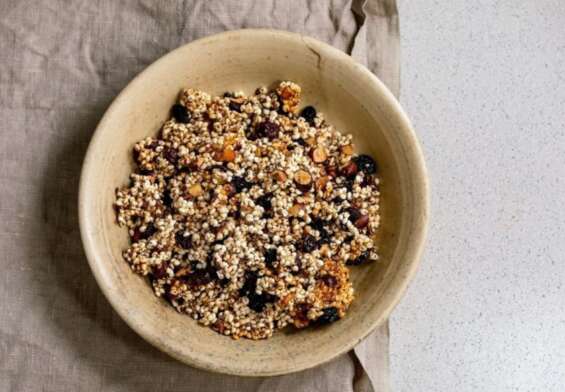
Autoimmune Protocol Diet: Manage Autoimmune Conditions
The Autoimmune Protocol (AIP) diet is an elimination diet that is designed to provide relief from chronic illnesses related to autoimmune disorders. The diet focuses on eliminating certain foods that have been known to cause inflammation in the body, such as grains, legumes, dairy, eggs, nuts, and seeds. Additionally, the AIP diet encourages the consumption of nutrient-dense, anti-inflammatory foods such as fruits, vegetables, and healthy fats. While the AIP diet is not a cure-all for autoimmune disorders, it can significantly reduce symptoms and improve overall health.
How the Auto Immune Protocol Diet Can Help Reduce Inflammation
Inflammation, it’s the bane of our existence! We’ve all felt its effects, whether it’s a swollen knee after a hard workout or an aching stomach after a meal that didn’t agree with us. But what if we could reduce inflammation and start feeling better? Enter the Auto Immune Protocol Diet!
This diet is a great way to reduce inflammation and keep you healthy. How does it work? It’s simple: by cutting out certain foods that can trigger an immune response, such as dairy and gluten, and focusing on foods that are known to be anti-inflammatory, such as vegetables and fruits.
The Auto Immune Protocol Diet also helps to reduce inflammation by avoiding processed foods and sugar. It encourages you to eat whole foods that are packed with nutrients and vitamins that can help combat inflammation. And, of course, it encourages plenty of water to keep your body hydrated.
So if you’re looking for a way to reduce inflammation, the Auto Immune Protocol Diet might be just what you need. Just remember, it’s important to consult your doctor before starting any new diet or exercise program. But, hey, if it helps your inflammation and makes you feel better, why not give it a try? Who knows, you might even have some fun along the way!
Benefits of Eliminating Common Allergens with the Auto Immune Protocol Diet
Do you suffer from allergies? Is it becoming increasingly difficult to find foods that don’t set off your allergies? If so, then the Auto Immune Protocol (AIP) diet might just be your saving grace!
The AIP diet eliminates common allergens like gluten, dairy, eggs, soy, peanuts, and processed foods. This diet has been proven to reduce inflammation, improve digestion, and enhance overall health. But what are the other benefits of eliminating these common allergens? Let’s take a look.
First of all, you’ll be able to enjoy the foods you love without worrying about the consequences. No more sneezing fits after eating a slice of pizza or a glass of milk. You’ll also be able to enjoy a variety of new and exciting foods that you may have never tried before.
Second, you’ll save money. No longer will you need to buy expensive allergen-free products. Instead, you’ll be able to enjoy fresh, natural foods that are cheaper and better for you.
Finally, and perhaps most importantly, you’ll be able to enjoy life without the fear of allergic reactions. No more worrying about what you can and can’t eat. You’ll be free to explore new cuisines, try new recipes, and enjoy social events without fear.
So if you’re tired of dealing with allergies, consider giving the AIP diet a try. It’s a great way to improve your health, save money, and enjoy life without the worry of allergic reactions. Who knows? You might even have a little fun in the process!
The Science Behind the Auto Immune Protocol Diet
The Auto Immune Protocol Diet (AIP) has been gaining popularity lately, and for good reason. People suffering from autoimmune diseases, such as rheumatoid arthritis, lupus, and multiple sclerosis, have reported a reduction in symptoms when following this diet. But what is the science behind the AIP Diet?
Let’s start with the basics: the AIP Diet eliminates certain foods that can trigger an immune response. This means avoiding foods like gluten, dairy, grains, legumes, eggs, certain nuts and seeds, nightshades, and certain additives and preservatives. In their place, the diet emphasizes nutrient-dense, anti-inflammatory foods like fresh vegetables and fruits, healthy fats, seafood, organ meats, and fermented foods.
So what does this all mean for those with autoimmune diseases? Well, by avoiding foods that can potentially trigger an immune response, the body is better able to focus its energy on healing itself. Studies have also shown that certain nutrients found in the AIP Diet (like omega-3 fatty acids, probiotics, and antioxidants) can help reduce inflammation and improve immune system function.
Now, we all know that scientists take themselves very seriously, so to lighten the mood a bit, let’s look at some of the more humorous aspects of the AIP Diet. For example, if you’re a fan of pizza, you’ll have to say goodbye to your beloved cheese and crust. But don’t worry, you can still enjoy the toppings! Just opt for a “cauliflower crust” instead.
Or maybe you enjoy a good ice cream sundae. Well, you can still enjoy the taste of this classic dessert, just opt for a coconut or almond-based ice cream, and swap out the sugary toppings for something like sliced banana or berries.
As you can see, the Auto Immune Protocol Diet isn’t all doom and gloom. With a little creativity, you can still enjoy delicious, healthy meals while following this diet. Who knows, with a little practice, you may even be able to make your own cauliflower crust pizza!
Tips for Making Auto Immune Protocol Diet Recipes
- Get Creative: Don’t be afraid to think outside the box when it comes to making AIP recipes. The goal is to get maximum nutrition while avoiding anything that could negatively affect your system. Try new ingredients and combinations to make unique and delicious meals.
- Don’t Skimp on Flavor: The AIP diet isn’t all about deprivation. You can still enjoy the flavors you love, just in a different way. Try adding fresh herbs and spices to your dishes for a burst of flavor.
- Rely on Leftovers: Meal prepping is key to staying on the AIP diet. Make a big batch of something on Sunday and you’ll have healthy meals for the week.
- Go for Sweet Treats: Just because you’re on a restricted diet doesn’t mean you have to miss out on sweet treats. There are plenty of AIP-friendly desserts to satisfy your sweet tooth.
- Get Your Greens: Vegetables are a key component of the AIP diet. Get creative and find new ways to make vegetables exciting. Try roasting, steaming, or stir-frying them for a delicious and nutritious meal.
- Don’t Forget the Carbs: Grains and starches are important for providing energy. You can still enjoy them on the AIP diet – just opt for gluten-free, grain-free options like quinoa, sweet potatoes, and squash.
- Have Fun: Despite the restrictions, you can still enjoy a colorful and flavorful diet. Don’t take it too seriously and have fun experimenting with new recipes and ingredients.
Understanding the Different Phases of the Auto Immune Protocol Diet
Are you sick and tired of feeling sick and tired? If so, the Auto Immune Protocol (AIP) diet might be the answer to your problems. But before you jump into this diet, it’s important to understand the different phases it involves. Let’s dive in!
Phase 1: Elimination
This phase is all about removing potentially problematic foods from your diet so you can start to heal. You’ll need to avoid all grains, dairy, legumes, eggs, nuts, seeds, nightshades, alcohol, and sugar. At this point, you may feel like you’re living in a world of lettuce and coconut oil, but hang in there!
Phase 2: Reintroduction
This phase is all about testing your body’s reaction to different foods. You’ll start with the “safe” foods you were eating in phase 1 and then slowly add back in the “risky” foods you had eliminated. You’ll take notes on how your body responds to each food, so you can figure out which ones you can tolerate and which ones you should avoid.
Phase 3: Optimization
This is where the fun begins! Now that you know which foods work for your body, you can start to really customize your diet. You’ll be able to add in foods that make you feel great and eliminate those that don’t. You can also start experimenting with different recipes, cooking techniques, and spices to create meals that make your taste buds happy.
The Auto Immune Protocol diet can seem overwhelming at first, but if you take it one step at a time, it can be a great way to get your health back on track. So, don’t be afraid to give it a try!
The Pros and Cons of Following the Auto Immune Protocol Diet
Pros
- You get to eat the same things every day – and you don’t even have to cook them!
- You’ll never be tempted to eat unhealthy food because you won’t even know what it looks like.
- You never have to worry about food allergies because you’ll only be eating foods that don’t cause them.
- You can pretend to be a caveman, living off the land and foraging for all your sustenance.
Cons
- You’ll never get to experience the joy of trying new flavors and recipes.
- You’ll miss out on all the fun of going out to eat with your friends.
- You’ll have to say goodbye to all your favorite snacks.
- You’ll never get to experience the joy of eating a giant slice of pizza or a giant chocolate sundae.
How to Overcome Challenges on the Auto Immune Protocol Diet
If you’re on the Auto Immune Protocol Diet, you know that it can be a challenge. But don’t worry, we’ve got your back. Here are some tips to help you overcome the obstacles that may come your way.
Spice up your life. Going on the Auto Immune Protocol Diet means no more spices, which can make your food pretty bland. But don’t worry, there are plenty of ways to add flavor without the use of spices. Try adding fresh herbs, garlic, and onions to your meals for an extra kick of flavor.
Get creative with your snacks. When you’re on the Auto Immune Protocol Diet, you have to be careful about what you eat for snacks. But that doesn’t mean you have to give up snacks altogether. Try making your own nut and seed bars using ingredients like nuts, seeds, coconut oil, and honey.
Have a plan. The Auto Immune Protocol Diet can be overwhelming, so it’s important to have a plan. Spend some time each week meal planning and preparing food so that you always have healthy options on hand.
Don’t be afraid to ask for help. If you’re feeling overwhelmed, don’t be afraid to reach out to friends and family for support. Having someone to talk to can help you stay motivated and make the transition to the Auto Immune Protocol Diet easier.
Have fun with it. Just because you’re on the Auto Immune Protocol Diet doesn’t mean you can’t have a little fun. Try experimenting with different recipes and ingredients and you may be surprised at how delicious healthy food can be.
By following these tips, you’ll be able to successfully navigate the Auto Immune Protocol Diet and come out the other side feeling better than ever. Good luck!
How to Incorporate More Plant-Based Foods into the Auto Immune Protocol Diet
If you’re looking to incorporate more plant-based foods into the Auto Immune Protocol Diet but feeling like you’re stuck in a rut, don’t fret! Here are some fun and creative ways to get your daily dose of fruits, veggies, and other plant-based foods.
- Get creative with your smoothies! Instead of just throwing in some fruits and veggies, try adding some seeds, nuts, and nut butter for a boost of protein. You can also sneak in some greens like spinach and kale for an added nutrition boost.
- Make a veggie-packed wrap or sandwich. Load up on your favorite raw veggies like peppers, mushrooms, tomatoes, cucumbers, and lettuce, and add some hummus or other plant-based spreads for flavor.
- Get creative with salads. Instead of sticking to the same old lettuce-tomato-cucumber-onion combo, try adding some grains like quinoa or farro, some roasted veggies, and some nuts or seeds for crunch.
- Make plant-based snacks. Try making some homemade energy bites or trail mixes with your favorite nuts and seeds. Or whip up some roasted chickpeas with your favorite spices.
- Try some new recipes. Check out some vegan and plant-based cookbooks or websites for some new ideas. You might be surprised by how delicious plant-based food can be!
With a few simple swaps and some creativity, you can incorporate more plant-based foods into your Auto Immune Protocol Diet in no time!
How to Balance Macronutrients on the Auto Immune Protocol Diet
Balancing macronutrients on the Auto Immune Protocol (AIP) Diet can seem like an impossible task, but don’t panic – it’s a lot easier than it seems! Here are some tips to help you get your macronutrients in balance.
First up, focus on healthy fats. These can be found in nuts, seeds, avocados, and olive oil, and they are essential for keeping your body running like a well-oiled machine. Aim to get at least 30% of your daily calories from healthy fats.
Next, get your protein levels in check. This is especially important if you are following the AIP Diet, as it eliminates many sources of protein. Some great sources of protein on the AIP Diet include eggs, poultry, beef, and fish. Aim for around 15-20% of your daily calories from protein.
Finally, don’t forget about carbs! While there are restrictions on the types of carbs that you can eat while following the AIP Diet, you still need to make sure you’re getting enough of them. Focus on nutrient-dense sources like sweet potatoes, squash, and plantains. Aim for around 45-50% of your daily calories from carbs.
Balancing macronutrients on the AIP Diet may seem daunting, but with these tips, you can become a macronutrient master in no time!
The Role of Supplements in the Auto Immune Protocol Diet
Are you feeling discouraged from following the Auto Immune Protocol Diet (AIP)? Don’t worry—we’ve got your back! Supplements can be your secret weapon for staying on track with AIP. Let’s take a look at how they can help.
First, supplements can provide nutrient support for the removal of food groups that are eliminated from the AIP diet. For example, if you’re having trouble getting enough Vitamin D due to the avoidance of sunlight, a Vitamin D supplement can help fill the gap. Or, if you’re missing out on healthy fats due to the exclusion of certain oils, a fish oil supplement can help with that, too.
Second, supplements can provide support for the digestive system. Many people who follow AIP find it beneficial to take probiotics or digestive enzymes to aid in digestion and help reduce inflammation.
Finally, supplements can be beneficial for helping to reduce inflammation and boost the immune system. Curcumin, omega-3 fatty acids, and vitamin C are just a few of the supplements that can be great additions to an AIP-focused diet.
So, don’t despair if you’re feeling a bit overwhelmed by the AIP diet. Supplements can be a fun and easy way to make sure you’re getting all the nutrients you need while still staying true to the AIP guidelines. Who knows, you might even surprise yourself with some unexpected health benefits!
Tips for Eating Out While Following the Auto Immune Protocol Diet
- When you go to a restaurant, always ask for the kitchen manager or chef. Explain that you are following a special Auto Immune Protocol Diet, but don’t be surprised if you get blank stares. Be sure to bring along a list of ingredients that you can and cannot eat and ask if the restaurant can accommodate you.
- Don’t be embarrassed if you have to ask for a few substitutions on the menu. It’s better to be safe than sorry. After all, one wrong ingredient could set off a flare-up.
- If you can’t find anything on the menu that conforms to the AIP diet, don’t be afraid to suggest a few dishes. Cooks are usually very accommodating and can often whip up something special just for you.
- Before you take a bite of anything, be sure to ask if it contains any hidden ingredients that don’t appear on the menu. For example, if you order a salad, ask if the dressing contains any hidden sugars or additives.
- Lastly, don’t forget to bring along your own snacks to the restaurant, just in case. That way, you won’t be stuck eating something that you can’t have.
Conclusion
The Auto Immune Protocol Diet is a popular diet that has been gaining traction in recent years. While it may not be for everyone, it is an effective way to reduce inflammation and improve health for many who have autoimmune disorders. Its anti-inflammatory properties focus on whole and unprocessed foods, and the elimination of potentially inflammatory foods can help to reduce inflammation and improve overall health. As with any dietary changes, it is important to speak with a doctor before beginning the Auto Immune Protocol Diet.











